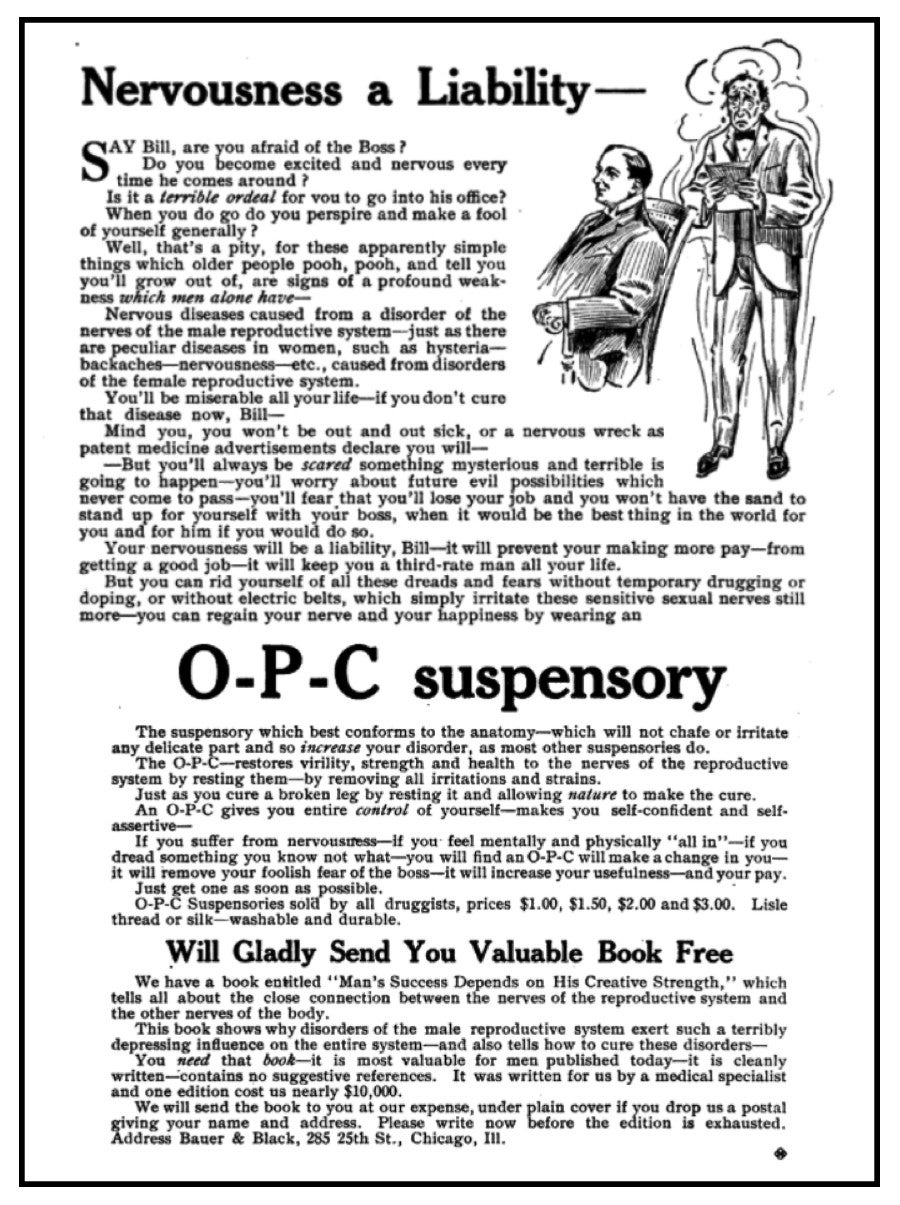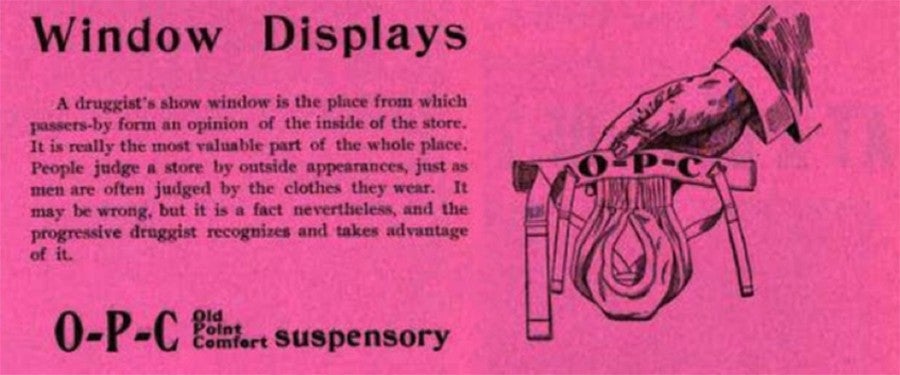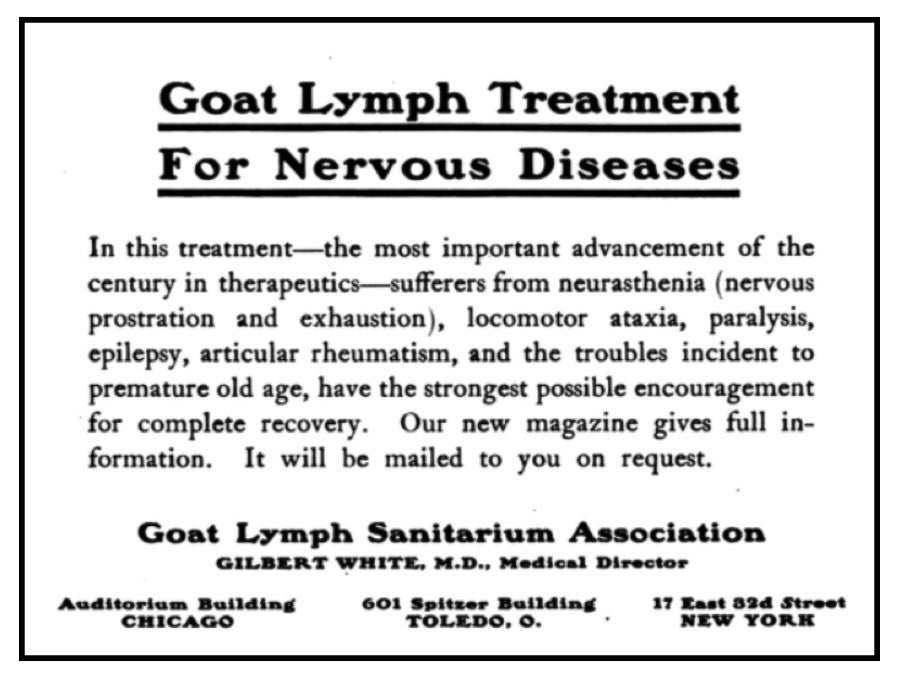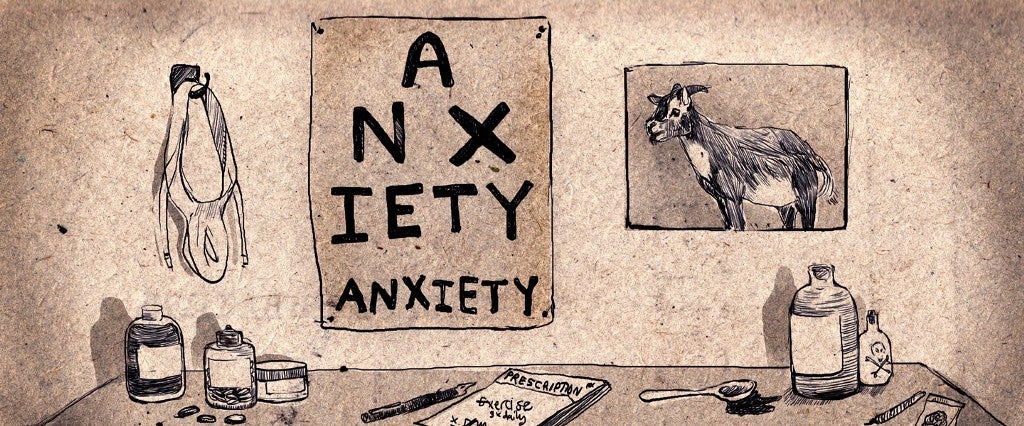There are a few categories where women tend to get all of the attention. These include red carpet fashion, pregnancy and old-timey anxiety cures. Of course, that’s partially due to the salaciousness of the female nervousness of yore — any time bringing someone to orgasm is considered a medical prescription and not just a good Tuesday, people are going to pay attention. And it’s partially that anxiety and nervousness were traditionally considered female traits — the word “hysteria” is rooted in women’s very anatomy, after all.
It took doctors some time to even turn their eye to men’s anxiety. In 1877, The Medical News published a speech by a Dr. S. Weir Mitchell about men and anxiety. Dr. Mitchell noted that nervousness in general was underreported, and “if spoken of at all, it is as if it were entirely the sad prerogative of women.” Of course, he probably didn’t increase anxiety diagnoses from either gender by describing nervousness with lines like “the strong man becomes like the average woman.” Or by being perplexed by the 18-year-old man who “strangely” developed an anxiety disorder after “while at his father’s funeral, slipped on the wet ground and fell into the grave,” as if “slipping into a grave while dealing with the worst grief of your life” were a regular 1877 party game.
Most of Dr. Mitchell’s suggested anxiety cures seem relatively modern, including spending time outside and using cannabis (in small doses). His time period starts to show, however, when he also recommends treatment with opium and arsenic. Personally, I’ll take my anxiety over slow poisoning.
But curing men’s nervousness wasn’t just the domain of doctors. It was also the domain of companies trying to make a quick buck. And while many of the cures were marketed to women, companies soon realized something important: Dudes will totally spend money on nervousness cures, too. This included the many, many manufacturers of patent medicines, proprietary medications that claimed to cure almost everything. At best, patent medicines were just booze with a few herbs mixed in, and at worst, they were laced with opium or cocaine.
Many of these patent medicines claimed to help with nervousness, but some of them went a step further, publishing books and setting up as Herbalife-style pyramid schemes. One example is the Viavi Method. Viavi was largely aimed at women — in terms of both salespeople and customers. But of course, they didn’t want to cut out a possible customer base, so the Viavi Hygiene book includes “a special chapter addressed to men” because “Under the high stress of modern life, men have become victims of nervous depletion to an extent that few of them appear to realize.”
The solution? Using Viavi Liquid, Viavi Royal, Viavi Laxative and Viavi Cerate, the last of which “should be copiously rubbed over the body for thirty minutes, particularly over the abdomen, stomach and back, once a day, and in severe cases more frequently.” According to Paul Collins in Cabinet Magazine, a 1907 chemical analysis revealed that the Viavi capsules, at least, were just “golden seal extract and cocoa butter.” And no, neither of these substances is supposed to help with anxiety, other than maybe the calming feeling of rubbing cocoa butter onto your skin.
Not all quack cures for anxiety were swallowed or rubbed, however. Some, such as the O-P-C Suspensory, simply amounted to a delicate cupping of the balls.

OPC stands for “Old Point Comfort,” as you can see in this ad from an 1897 issue of American Druggist and Pharmaceutical Record, wherein the company recommends that drug stores put a bunch of cloth nutsack-holders in their window displays:

I do not know why this page is pink.
Suspensories do have legitimate uses, even today. Bauer & Black, the company that made OPC, still sells them (although they’re now part of 3M). But the primary reason for wearing one is for recovering after injury or surgery, not to deal with the regular weight of gravity on your sack.
So did the suspensories work for nervousness? Anecdotal evidence suggests they sold well; in an 1899 issue of American Druggist and Pharmaceutical Record, the News and Notes of the Traveling Salesman section notes that one A. Bateman “sold large quantities of Bauer & Black’s goods, especially the O.P.C. suspensory.”
I spent more time looking through a 1918 male urology textbook than any woman in 2017 should, and while use of suspensories was mentioned often, never was their use connected to any sort of nervous strain. I also tried to contact multiple modern urologists and male sexual health experts, but for some crazy reason they appear to be more interested in doing their jobs than commenting on 100-year-old theories about whether your junk’s weight could cause such a strain that you can’t face your boss.
But perhaps the worst bit of testicle-based quackery meant to cure men of nervousness (and everything else, because almost every marketed cure in the late 1800s and early 1900s was multipurpose) were the goat testicle surgeries of king quack John Brinkley.
The goat craze was already happening before Brinkley came onto the scene; in the early 1900s, newspapers and magazines started featuring advertisements about the wonders of goat lymph treatment:

The details of how exactly it worked were hazy, of course. In an advertorial in a 1903 issue of the Chicago Tribune, it’s noted that goats were the selected lymph animals because “Somebody, just who is immaterial, recalled the fact that he had never heard of a sick goat, or one that had died of disease or old age.” First of all, nothing in that sentence inspires confidence of scientific rigor, and secondly, this seems to imply that if we didn’t kill goats for their meat or sweet sweet lymph juice, they’d live literally forever, and Earth would just be one big goat rave.
Brinkley improved on the goat lymph method by creating a massively profitable surgery that consisted of taking a goat testicle and sewing it into the human nutsack. (And occasionally other places, including on women, because as Brinkley wrote, “many beautiful women go through life with their sexual capacities for happiness undeveloped,” which can of course be fixed with goat glands.) Like the lymph treatment, it was supposed to be a cure-all — not only to eliminate anxiety, but also return youthful vigor, make dicks hard, cure childlessness, fix high blood pressure, and maybe even cure epilepsy? Sure, why not.
Obviously, multiple people who received this surgery died, but Brinkley still became a multimillionaire and also created one of the most powerful radio stations of his day, because some jerks always manage to succeed even when they fail.
The fact that we still don’t have a certain cure for anxiety is a clear sign of how much bullshit all these “cures” were. Sure, we’ve made improvements — over the past 100 years, we’ve learned how to better manage nervousness, dull it, and cajole it into submission. We can whisper chemical soothings into anxiety’s ear with medications and suffer their side effects, or we can meditate and cut down our to-do lists and remind ourselves that humans weren’t meant to be machines accomplishing things every moment of the day, no matter what the army of knock-off Tim Ferriss bloggers tries to tell you. But there’s still no perfect cure; we just have to muddle through with our nervousness and piece together what works for us, sewing our own quilts of anxiety management.
So if you want to try wearing a Bauer & Black Suspensory, man, go ahead. Maybe all your anxiety needs is a delicate cupping of the balls.
